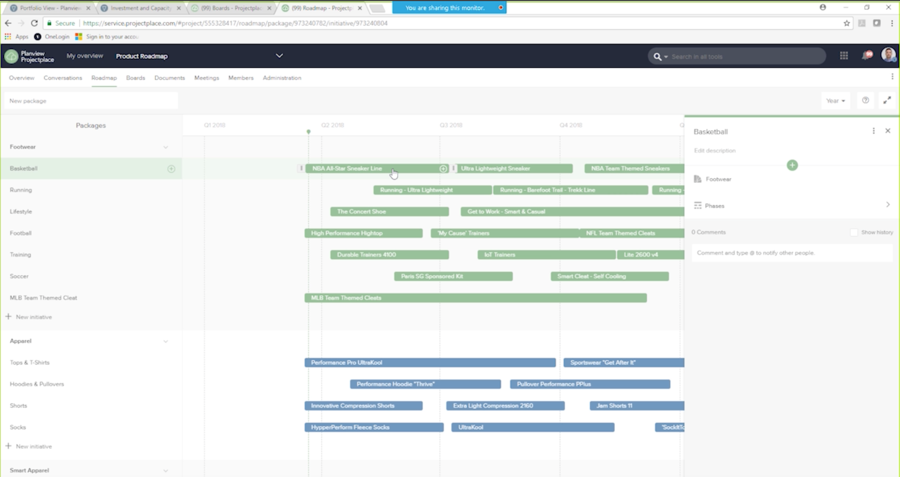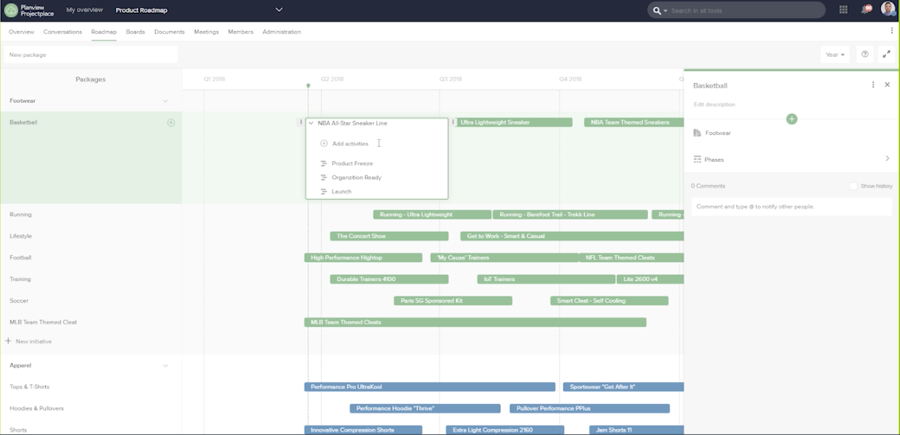
As we continue our blog series on using the Pragmatic Marketing Framework to improve product development, we turn our sights now to product roadmaps. Before we get started, be sure to catch up on anything you missed in part 1: Supporting Product Strategy to Execution Leveraging the Pragmatic Marketing Framework, and part 2: Supporting Sales and Leveling the Competitive Landscape with Planview and the Pragmatic Marketing Framework.
Product roadmaps are a way of life for any company that produces new products, sustains generations of product upgrades, or introduces new solutions. They help us make informed decisions and keep our internal and external stakeholders in the loop. But over the years, traditional product roadmaps have become wildly inefficient.
First off, product roadmaps that rely on spreadsheets or slide presentations can quickly become outdated as new development decisions are made on the fly, often on a weekly or daily basis. Unless the associated documents are updated and redistributed, our internal teams, vendors, and executives will find themselves making ill-informed decisions based on our inaccurate data.
Traditional product roadmaps sometimes are built by teams that mistake “technology ready” to be the same as “ready to launch.” A product isn’t truly ready for launch unless the company behind it—sales, service and support, the supply chain, PR and marketing—is also ready. The end date on a roadmap is not always the date that a product is ready. It has to be the date that the organization is prepared to execute the product’s launch.
The largest shortcoming of traditional roadmaps is that they don’t provide a vision of the problem companies are trying to solve or how they plan to do it. An effective roadmap should paint a clear picture of what problems we can solve and why customers, prospects, and the market should care.
Looking at the framework diagram below, you’ll see product roadmaps come after the Competitive Landscape section, which we discussed in our last chapter of this series.
At Planview, we use the framework and ProjectPlace to communicate our roadmaps with our customers and collaborate with them so that they understand how and when to provide feedback on our product development. We can also do this without divulging proprietary information.
ProjectPlace enables product teams to customize roadmaps for review, whether it’s for a customer or one of your high-level executives. Not all customers want to see the same details of a product roadmap, and a lot of executives don’t care for the granular details. ProjectPlace enables us to provide only the information desired, which is accurate and current.
However, the granular view is vital to ensure all aspects of the product development cycle are covered. As you can see from the product roadmap of our fictitious sports apparel company and its line of basketball shoes, we have all the information that we need for our customers from a high level to show them how we’re bringing this product to market.
For our development team, we might need a more granular view (below) where I can add activities that show the status on a product freeze, organizational readiness, or where we stand on the launch process.
These updates reinforce the difference between technical readiness vs. organizational readiness for your product launch.
Allowing you to get incredibly granular within the product roadmap while also being able to keep it high level for customers is very important. At the same time, this is not a static image. It’s not a presentation slide. It is very easy to update so you can always present an accurate state of your roadmap to any stakeholders.
Through these steps, ProjectPlace with the Pragmatic Marketing Framework provides you with that single source of truth needed to increase visibility across your company and your customers. It helps reduce the time and effort put into creating and communicating roadmaps. Ultimately, it will enable everyone involved to make better and more informed decisions.








